Several years ago, the aster genus was separated into a number of genera; symphyotrichum, doellingeria, and eurybia. Aster now includes most European and Asian asters including the widely grown Michaelmas daisies.
The aster genus consists of a range of species, each one offering something different in height, colour and flower size. There are also a large number of cultivars available to provide good displays of late summer and autumn colour.
Flowering late in the season, asters offer an invaluable source of pollen and nectar at a time when much in the garden has started to fade. After flowering, seedheads and stems can be left in place to provide a food source for birds and shelter for overwintering insects. In late winter/early spring, the skeletal remains of the plant can then be cut down to make way for new growth.
Asters are happiest growing in full sun or part shade and a general soil which is neither too wet nor too dry.
Our range of asters include:
Aster ageratoides 'Ezo Murasaki'- forms a rounded bush with large, vivid purple-violet flowers punctuated with prominent golden-yellow stems. Its late flowers are an important source of nectar for bees before winter sets in. Flowers from August until November and reaches a height and spread of 90cm x 50cm. Syn. Aster trifoliatus subsp. ageratoides 'Ezo Murasaki'.
Aster amellus 'King George' (Italian aster)- this old variety is still a firm favourite with its long-lasting show of large violet-blue flowers on compact plants which need no support and are resistant to mildew. Has a height and spread of 45cm and flowers throughout August and September.
Aster 'Betel Nut'- bright glowing bruised-pink flowers with a golden eye. Originally obtained from Great Dixter where it was raised. Flowers from August -October. A tall variety reaching 1.8m in height with a spread of 1m.
Aster 'Ice Cool Pink'- A well behaved, clump forming aster with small, pink flowers on upright stems. Has a long flowering period from August to October and grows to 1.2m high and 60cm across.
Aster peduncularis- long and free-flowering aster with attractive dark, hairy foliage. Good sized flowers, lilac in colour are produced from July to September. Good in sun or part shade, even worth trying in dry shade. Height 60cm and spread 30cm.
Aster pyrenaeus 'Lutetia'- (Pyrenees aster)- one of Beth's favourite asters. Makes a loose mound of interlaced branching stems smothered to the ground with pale, lilac-blue flowers with finely-rayed petals 5cm across. Lasts for weeks in the garden, perfect to soften the outline of mixed autumn arrangements. Reaches 50cm in height with a spread of 30cm.
Aster tataricus- a dramatic, late-flowering aster with pink flowers atop tall, upright stems, emerging from a rosette of large, dark green leaves. Tolerant of a range of soils, but in a good retentive soil and in a sunny warm spot, should provide the best chance of full flowering. Very different in form and feel to many other asters. Our tallest aster at 2m high with a spread of 1.2m.
Aster x frikartii 'Mönch'- each individual stem produces seven or eight side branches starting from the base, all carrying further branching heads of flowers. An established clump will send up many such stems resulting in a wide-spreading elegant bouquet of flowers lasting from late summer and through autumn. Individual flowers are a warm lavender-blue with yellowish-green centres. Absolutely the best Michaelmas daisy for a long display. It doesn't need staking, and is not affected by mildew. Height 1m, spread 45cm.
Read on: Symphyotrichum- How to Grow and Care for
![]()
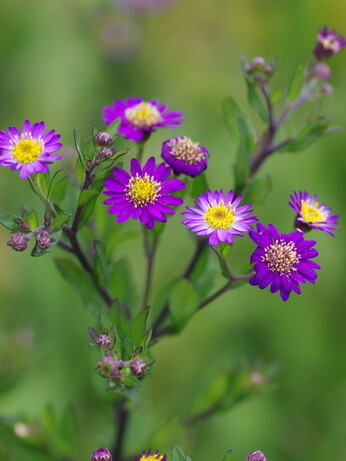
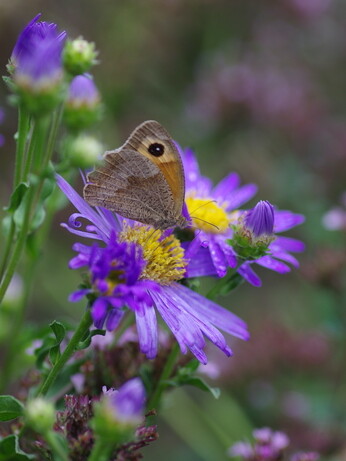
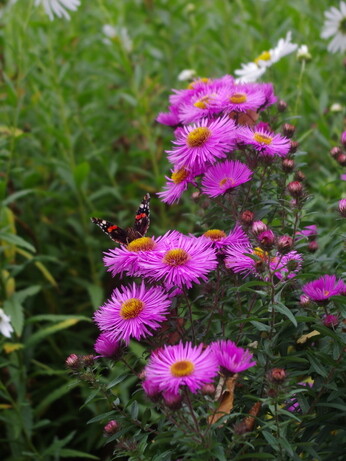
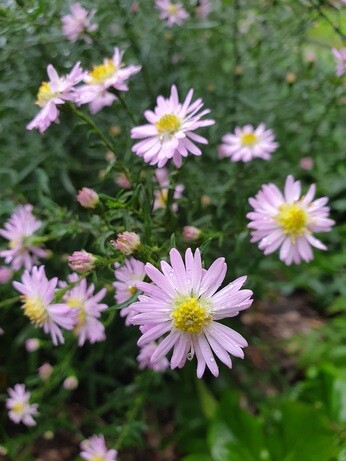
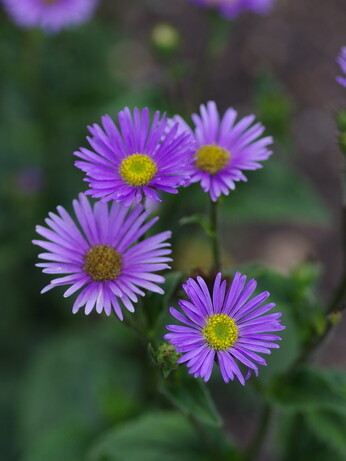
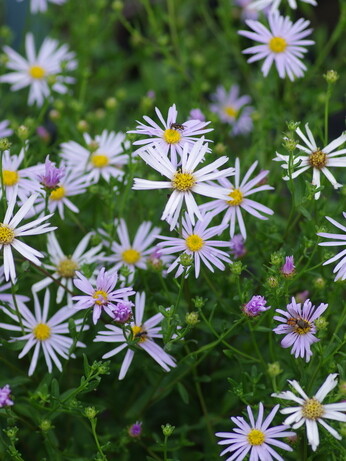
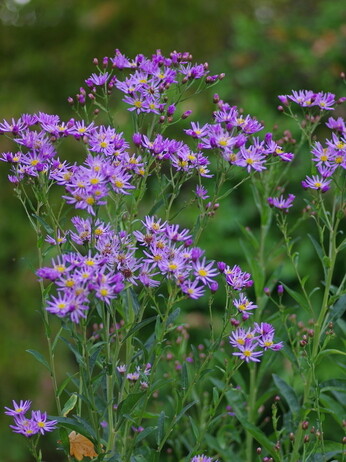
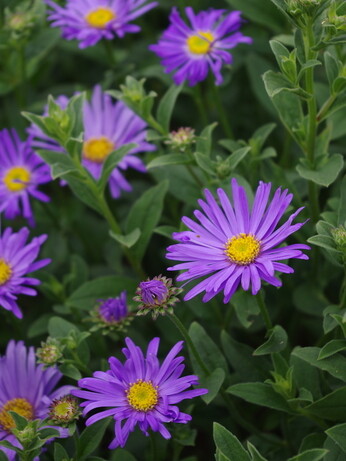
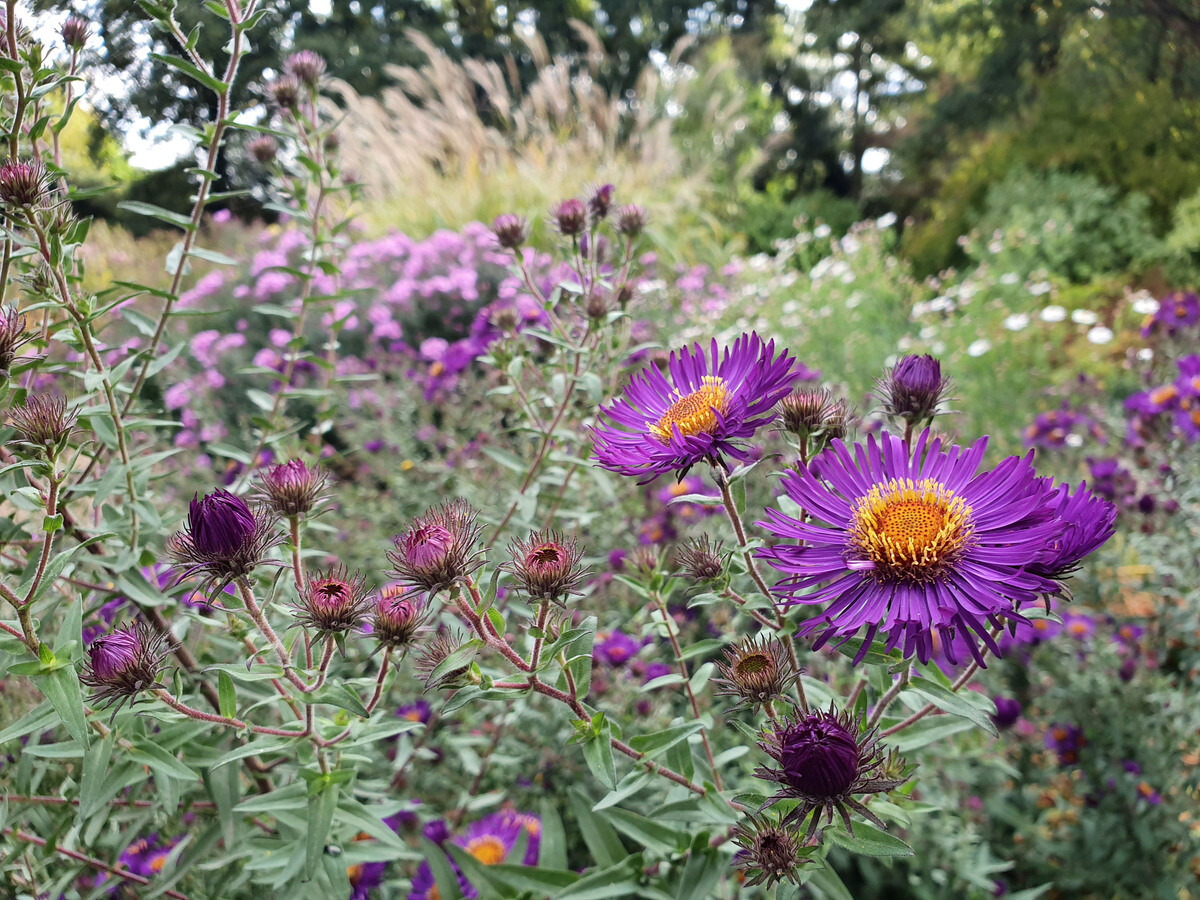


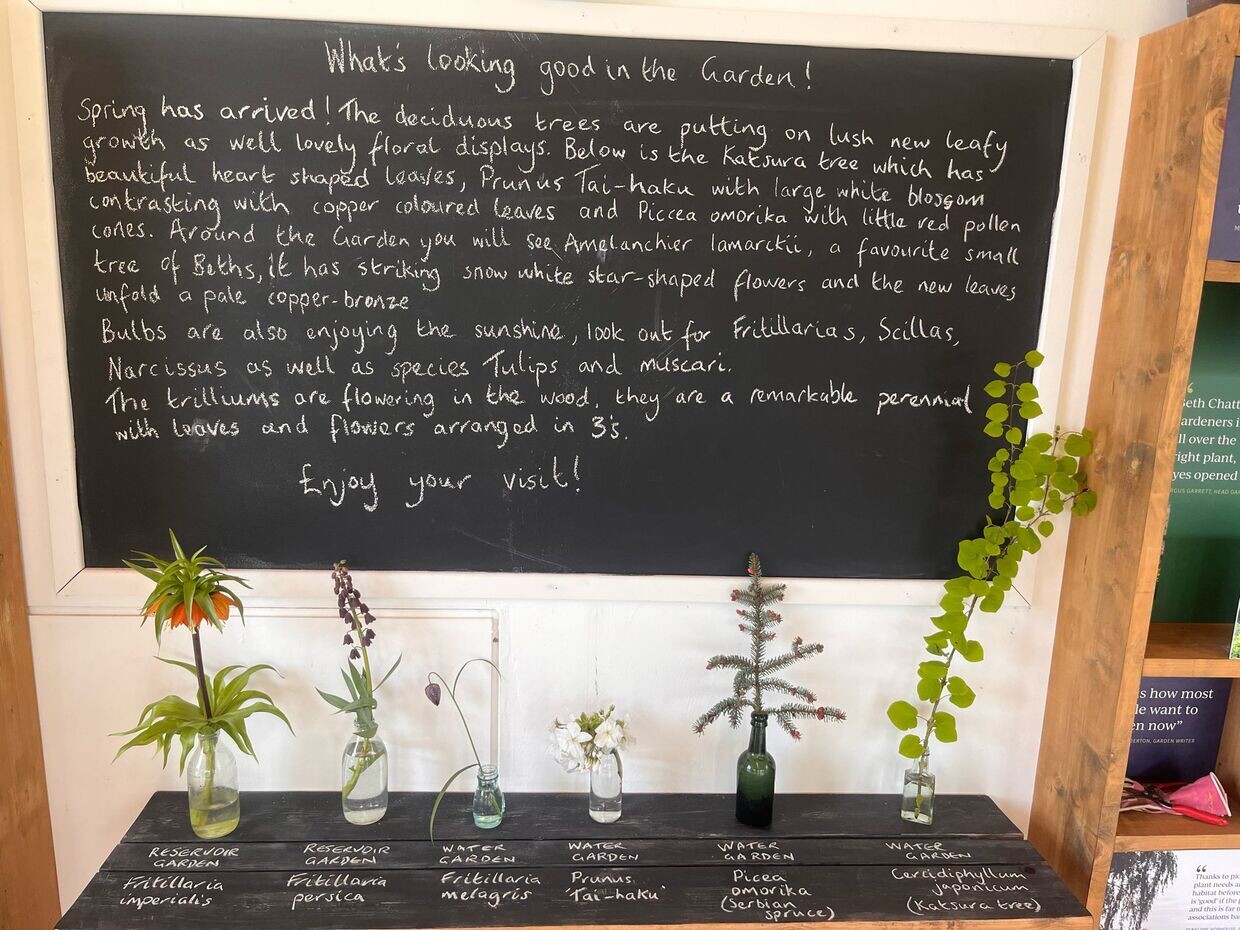
Comments